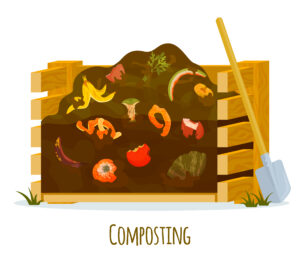
Managing food waste at a consumer level
About 40% of perishable fresh produce produced in India goes waste.
A nation-wide study was conducted by CIPHET. The results were that nearly 4.65-5.99% of cereals are wasted, and nearly 4.58-15.88% of fruits and vegetables are wasted. Among pulses, the losses increased from an earlier estimate of 4.3-6.1% in 2010 to 6.36-8.41% in 2015. Overall losses also increased in milk, meat, poultry and marine fisheries. The study also estimated that the value of the post-harvest losses is at Rs 92,651 crores
In this blog, we will look at the types of commodities from which waste is generated and ways to counter them at a consumer level.
Agricultural commodities can be broadly classified into 6 major categories
- Food grains which include cereals and pulses.
- Oilseeds which includes groundnut, sunflower, sesame etc
- Sugarcane
- Horticulture crops which include fresh fruits like mango, banana, apple, and fresh vegetables like tomato, potato, capsicum etc.
- Livestock which includes eggs, chicken, milk and other birds
- Fish
Due to limited post-harvest infrastructure, there are losses and wastages across the entire food supply chain. During transport, damage and spoilage occurs due to overloading, poor roads and incorrect temperature for storage of food products.
There are various ways in which food waste can be reduced at consumer level
Firstly,
composting is the most important aspect in reduction of food waste. For that, waste separation inside houses is required which separates the bio-degradable and the non-bio degradable food waste. A small pit has to be created, about 3 feet deep, and the bio-degradable waste is then dumped into it. It is covered and after 3-4 weeks, it turns into compost which can be used in household plants. This helps in reducing food waste greatly.

Sample photo of how compost pit
Secondly,
buying fresh fruits and vegetables which are locally grown and seasonal is an essential step towards food waste reduction. As they are locally grown, they do not have to travel much and hence, their freshness is retained and they are not spoilt during transit. Doing this also helps the local produce sellers. In India, this is highly prevalent. Each area in a city has a ‘mandi’ or a local market where traders and farmers come and sell their fresh produce daily. If there’s waste here, it goes as fodder for animals like cow so there’s zero wastage.
Thirdly,
social factor plays an important role in food waste. It has to be made socially acceptable in all areas of the world to only prepare food that is needed and also to finish all the food that is there on one’s plate. Countries such as Germany, Italy and India have this culture where food is valued and children are trained to take only what they want to eat and finish their plates.
Following these steps, we will be able to greatly reduce food waste, reduce carbon emissions and make the world a greener place.
#foodwaste #wasteseparation #composting #buylocal #eatlocal


No Comments